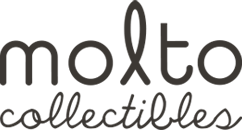
07 Apr Interview / Umberto Mantineo
“Nice! What is it? “
We asked you to tell us about an item and we know that one in particular won in the end. Can you tell us about it? Sure. I chose Hippopotamus I, designed in 1968 by Francois-Xavier Lalanne. It is a wonderful sculpture, a life-size hippo, measuring 126 x 283 cm! in blue resin, but in reality … it is a bathtub. There are only three examples and the original model was purchased in 1970 by the wife of Marcel Duchamp. Basically Duchamp took a bath inside a blue hippo…
Why are you interested? It is an engineering masterpiece and that is why I am passionate about it. If you look at the doors, the doors, the welds, they all follow the anatomy of the animal. He made these huge zoomorphic sculptures; his wife, on the other hand, was referring more to the phytomorphic world. The animals made them all: elephants, mice, birds, then they mixed. Their world was a fantasy, a little baroque in the idea, a little minimalist in form, certainly surrealist. But all the objects they made had a function . I always care that an object “holds up”, both physically and ideally, in practice as well as being beautiful, it must have a function.
Other examples that interest you in this direction? The Superboxes by Ettore Sottsass or the totem rr231 by Mario Bellini.
Returning to the Lalannes. What are you most interested in their work? The coherence, the irony, but above all the workmanship, used fusion, welding, hammering, electronic plating, they experimented. He studied drawing, worked in the Louvre in the Oriental Antiquities section, made his first exhibition with Constantin Brâncuși in 1952. I would say not bad, right ?. Their works are in the most interesting private collections, those of Hubert de Givenchy, Max Ernst, Karl Lagerfeld, Peter Marino, Valentino, Jaques Grange, that of the Barons de Rothschild, Tom Ford, Serge Gainsburg, Yves Saint Laurent and Pierre Berger. < / p>
What relationship do you have with the artisans? I really like working closely with artisans. I never arrive waving a sheet with the project already set up, I like to think about the idea with those who will then physically create the object, I explain, listen, reflect, I like to work this way. When we can’t understand each other, we have lunch together and then go back to work. I am very attached to craftsmanship and I have great respect for those who continue this important tradition. I have used almost all the materials. And when you find a good craftsman, the possibilities are endless. I am very stubborn. When we find a solution together, I’m happy. Much of my inspiration comes from how a material can be worked.
When did you discover the Lalannes? I wanted to make furniture with secrets and by doing research I discovered them. Furniture with secrets has always existed. From the Middle Ages, from chests with double bottoms. To the masterpiece that is the cylinder desk of Louis XV. This dimension has gotten a bit lost. The Lalannes, on the other hand, were a voice out of the chorus. There is an infinite coherence in their work, they lived in this parallel world, in a playful dimension, in their home-studio near Fontainebleau.
How does imagination help you in your work? I never imagine an object physically and individually, isolated from the context, but more in an atmosphere. For me, knowing where an object ends up is essential. As with architecture, I can’t work on an apartment if I don’t know where the light goes, where the north and the south are. The inspection is essential. As well as getting to know customers. Coming straight with customers is a bit strange. I think they always expect reasoning about them, it should be like that. Otherwise it is a hotel, and fortunately we are not machines.
Is there something you have drawn that you are particularly fond of? To this table in natural unpolished brass; very simple, it is a continuous square brass bar, a bit like those 3D screensaver drawings of Windows, you know? And then for a structural fact I had put some spheres at the base that held everything. The object must always be firm and safe, you never know how it will be used. I like geometry a lot; I love mirrored and geometric things, right or wrong, they drive me crazy, that’s why I have this fascination for Lalanne, because she is anything but geometric.
Architecture or design in your work in what percentage? I would say a 50 and a 50 but the starting point is always the architecture. Mine is an integrated basic work, while I design the space, I often imagine the object either to be drawn or to be found.
What is your relationship with vintage objects? I like them very much, I like historical research and the knowledge of private collections. A house is the story of those who live there, otherwise it’s just a nice photo!
What environment do you like most to design in a house? My houses do not have such defined environments, so I like almost all environments, because spaces are defined according to how, for example, you close the doors; I like to think of an open environment that, depending on how you live it, changes it, closing and opening spaces.
Do Italians have a different point of view than others? We copy badly what others have copied from us. We should go back to the identity of the places, its materials, our culture and move forward from there, expand, complicate … but how do you go forward if you don’t know what happened before?
If you hadn’t been an architect what would you have done? Every time I change, at this moment I would tell you the psychiatrist.
Very empathetic then … I really enjoy listening and am very interested in others, as long as they have something to say. [smiles]


